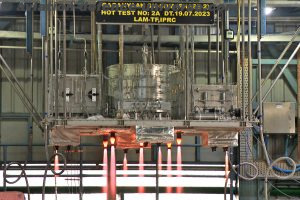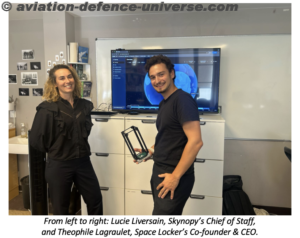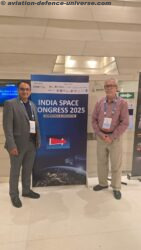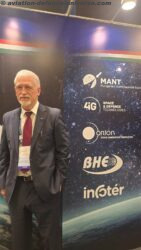 Bangalore. 22 July 2023. ISRO successfully tested the Gaganyaan Service Module Propulsion System (SMPS) on July 19, 2023 at ISRO Propulsion Complex (IPRC) , Mahendragiri. This test involved five liquid apogee motor (LAM) engines with a thrust of 440 N and sixteen reaction control system (RCS) Thrusters with a thrust of 100 N.
Bangalore. 22 July 2023. ISRO successfully tested the Gaganyaan Service Module Propulsion System (SMPS) on July 19, 2023 at ISRO Propulsion Complex (IPRC) , Mahendragiri. This test involved five liquid apogee motor (LAM) engines with a thrust of 440 N and sixteen reaction control system (RCS) Thrusters with a thrust of 100 N.
The Service Module of Gaganyaan is a regulated bi-propellant based propulsion system that caters to the requirements of the Orbital Module, performing orbit injection, circularization, on-orbit control, de-boost manoeuvring and SM based abort (if any) during the ascent phase. The 440 N Thrust LAM engines provide the main propulsive force during the mission ascending phase, while the RCS thrusters ensure precise attitude correction.
The hot test of the System Demonstration Model (SDM) emulated the fluid circuit of the Service Module Propulsion System, encompassing the propellant tank feed system, helium pressurization system, flight-qualified thrusters, and control components.
The first hot test of the Phase-2 test series demonstrated the integrated performance of the Gaganyaan Service Module Propulsion System. The test, conducted for a duration of 250 seconds, involved LAM engines firing in continuous mode, along with RCS thrusters, adhering to the test profile. As part of the Phase-1 test series of SM SDM, ISRO had previously conducted five hot tests, totalling a duration of 2750 seconds. The earlier phase involved five 440 N LAM engines and eight 100 N RCS thrusters. For the Phase-2 test series, the current configuration includes the full configuration of five 440 N LAM engines and sixteen 100 N RCS thrusters.
The Gaganyaan Service Module Propulsion System is designed, developed, and realized by Liquid Propulsion Systems Centre (LPSC).
Liquid Propulsion Systems Centre (LPSC)
With the successful completion of this hot test, the SMPS has advanced in demonstrating its integrated performance in the full configuration. Moving forward, ISRO has scheduled five additional tests to demonstrate both nominal and off-nominal mission scenarios, reinforcing the rigor of testing and the commitment to mission success.


























































































































